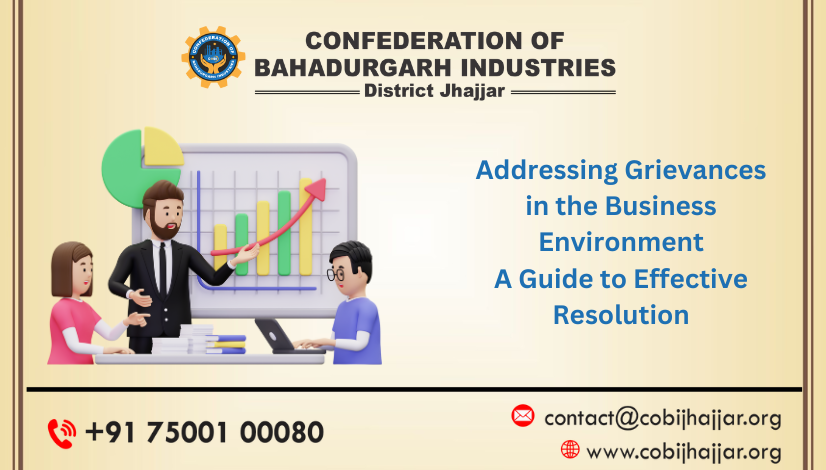Addressing Grievances in the Business Environment: A Guide to Effective Resolution
In the dynamic landscape of the business world, addressing grievances is crucial for maintaining a healthy and productive work environment. Business grievances can arise from various sources, including employees, customers, and business partners. Effectively resolving these issues is essential for conflict management, workplace morale, and the overall success of an organization. In this blog, we will explore the significance of addressing grievances in the business environment and provide strategies for their effective resolution.
The Importance of Addressing Business Grievances
1. Maintaining Workplace Harmony: Addressing grievances promptly and fairly helps prevent the escalation of conflicts, leading to a harmonious work atmosphere. A harmonious workplace is more conducive to productivity and employee satisfaction.
2. Boosting Employee Morale: When employees see that their concerns are taken seriously and resolved, it can boost their morale and engagement. A satisfied workforce is more likely to be motivated and committed to their work.
3. Preventing Escalation: Ignoring grievances can lead to more significant issues down the road. Resolving conflicts early prevents them from becoming unmanageable and affecting the overall business environment.
4. Enhancing Reputation: A business that is known for addressing grievances effectively is likely to have a positive reputation. This can lead to improved customer trust and loyalty.
Strategies for Effective Grievance Resolution
1. Create a Clear Grievance Policy: Establish a well-defined grievance policy that outlines the steps for reporting, addressing, and resolving grievances. Make sure all employees are aware of this policy.
2. Listen Actively: When someone raises a grievance, listen attentively to their concerns. Show empathy and make them feel heard and valued.
3. Investigate Thoroughly: Conduct a thorough investigation to understand the root causes of the grievance. Collect all relevant information and involve relevant parties.
4. Maintain Confidentiality: Ensure that the grievance process is confidential to protect the privacy of those involved. This promotes trust in the process.
5. Provide Timely Feedback: Keep the complainant updated on the progress of the grievance resolution process. Timely communication is essential to demonstrate that their concerns are being taken seriously.
6. Seek Solutions: Work collaboratively with the involved parties to find mutually acceptable solutions. Encourage open dialogue and problem-solving.
7. Document the Process: Keep records of the grievance resolution process, including all relevant communications and decisions made. Documentation is important for transparency and accountability.
8. Follow Up: After the grievance is resolved, follow up with the complainant to ensure they are satisfied with the outcome. This demonstrates your commitment to a fair resolution.
9. Implement Preventative Measures: Analyze recurring grievances to identify patterns or underlying issues. Implement preventative measures to address the root causes and reduce future grievances.
Success Stories: Effective Grievance Resolution in Action
Several organizations have successfully implemented grievance resolution strategies to address employee and customer concerns. These efforts have led to improved employee retention, customer satisfaction, and overall business performance.
The Path Forward: A Harmonious Business Environment
In conclusion, addressing grievances in the business environment is a fundamental part of maintaining workplace harmony, boosting morale, and preventing conflicts from escalating. By following the strategies outlined here, businesses can create a fair and transparent grievance resolution process that contributes to a more harmonious and productive work atmosphere.




